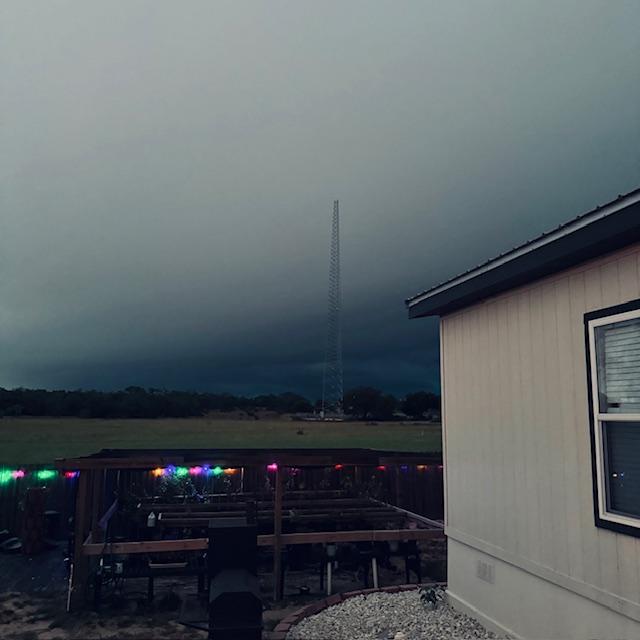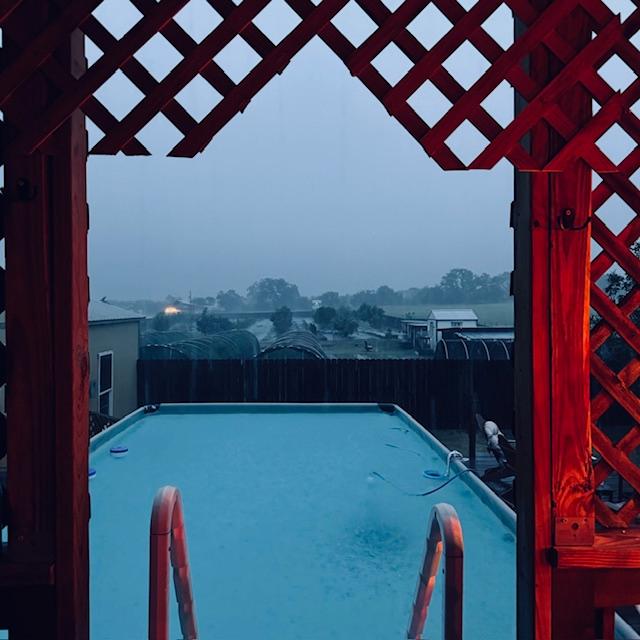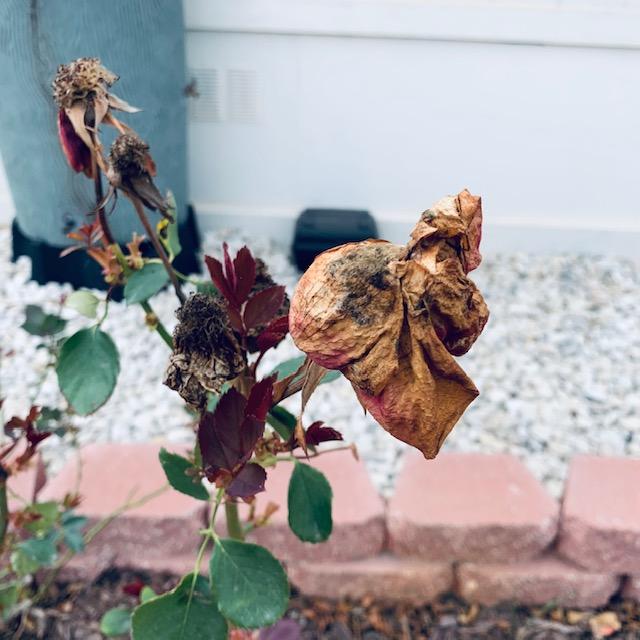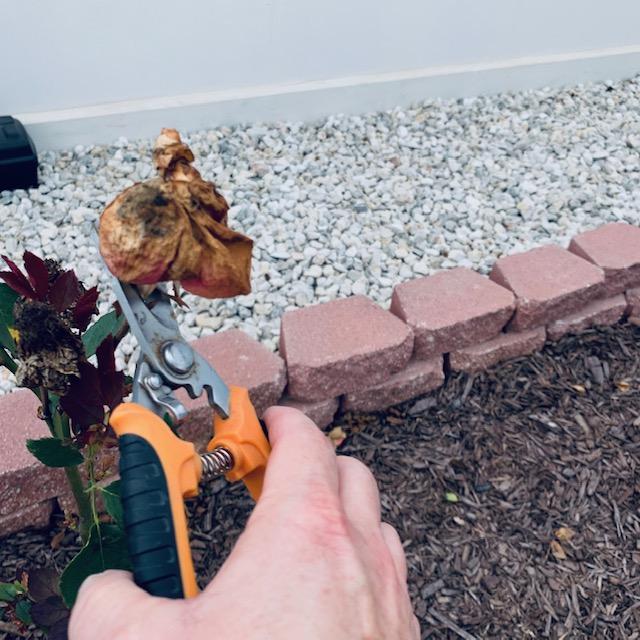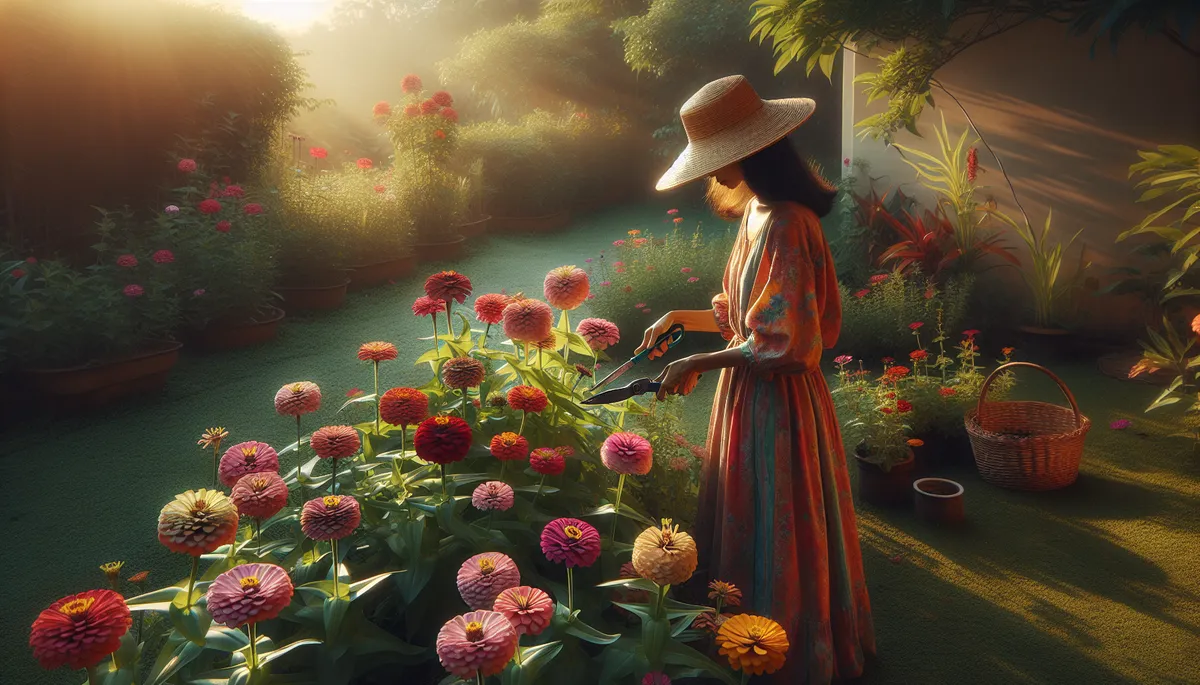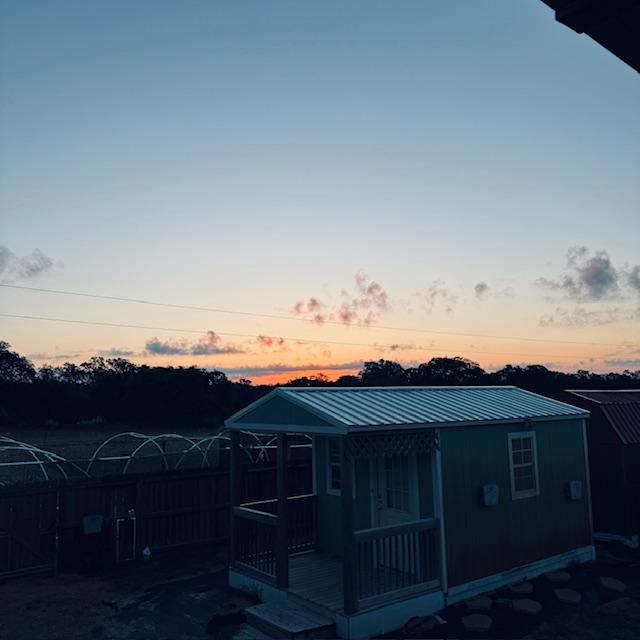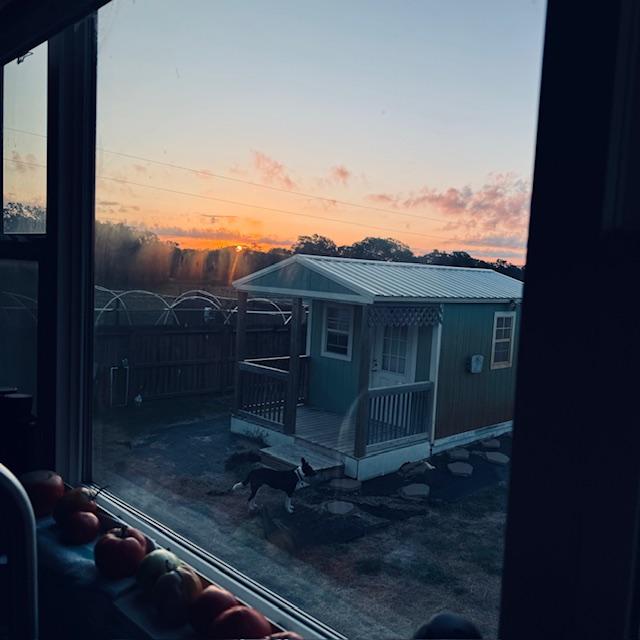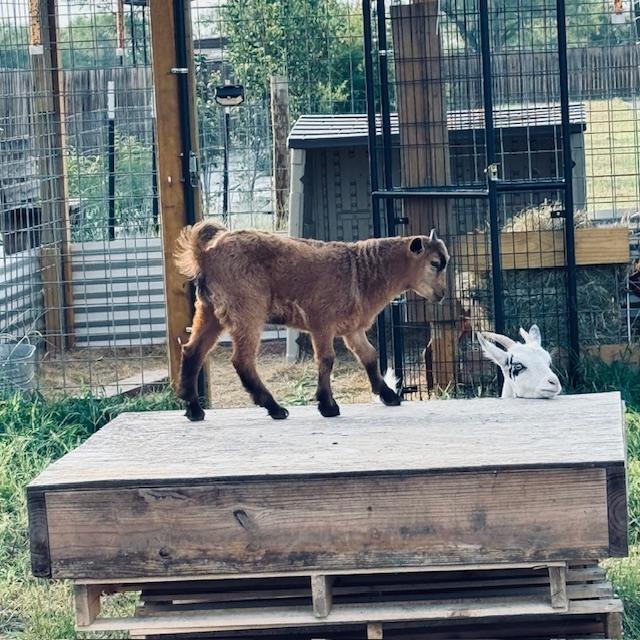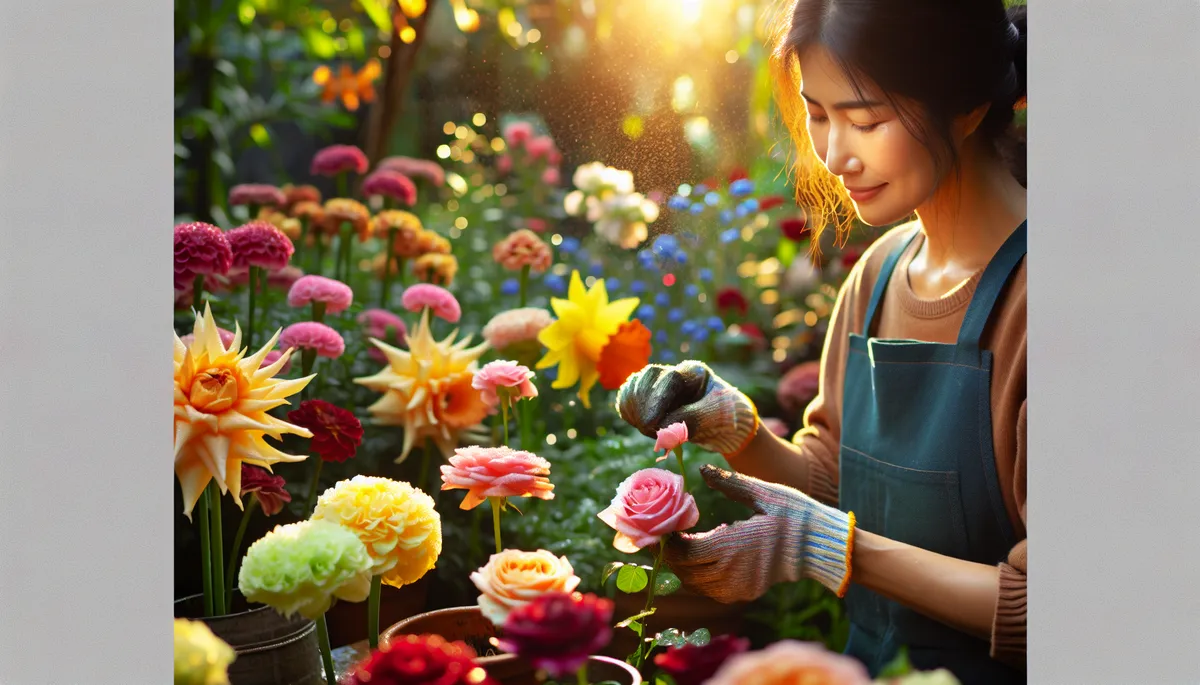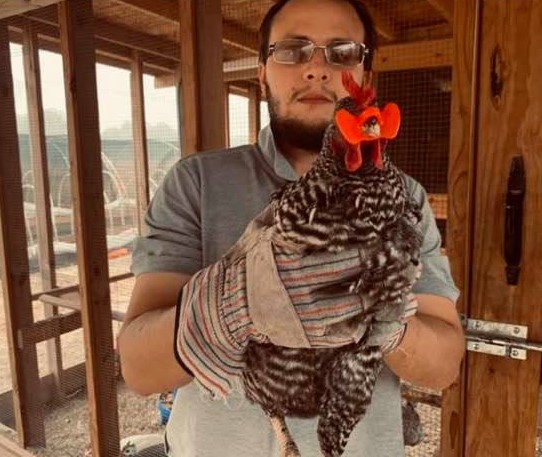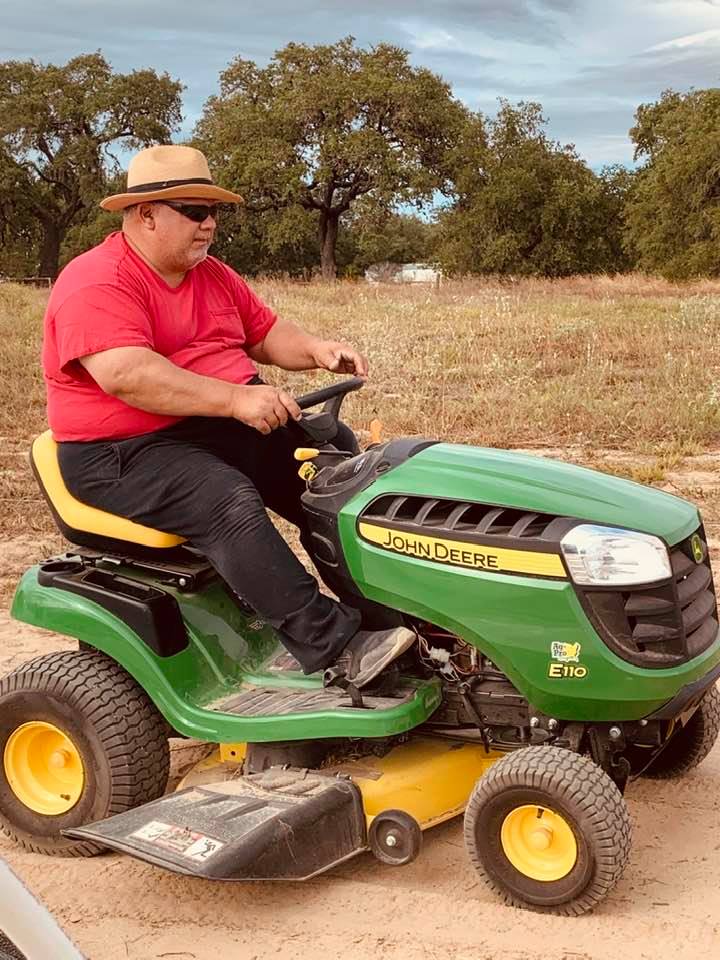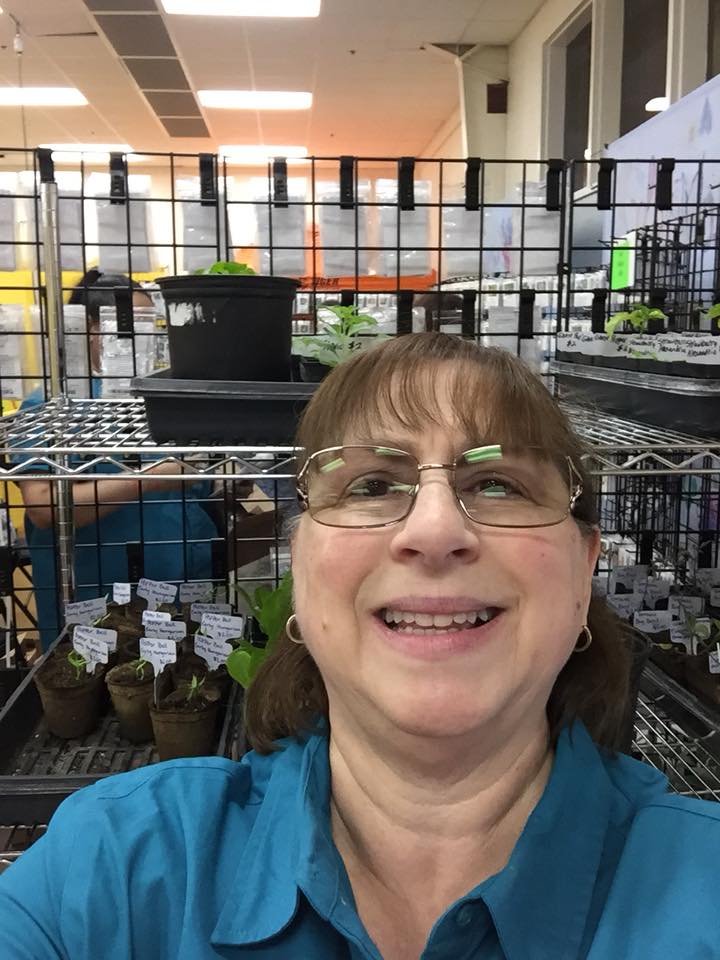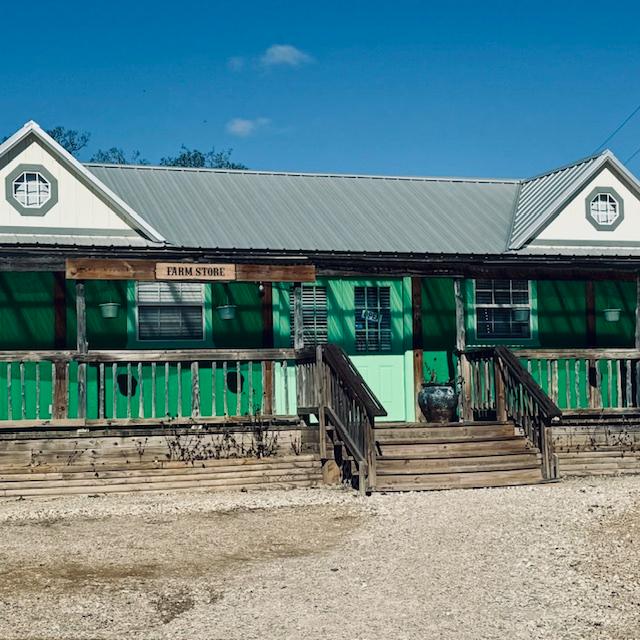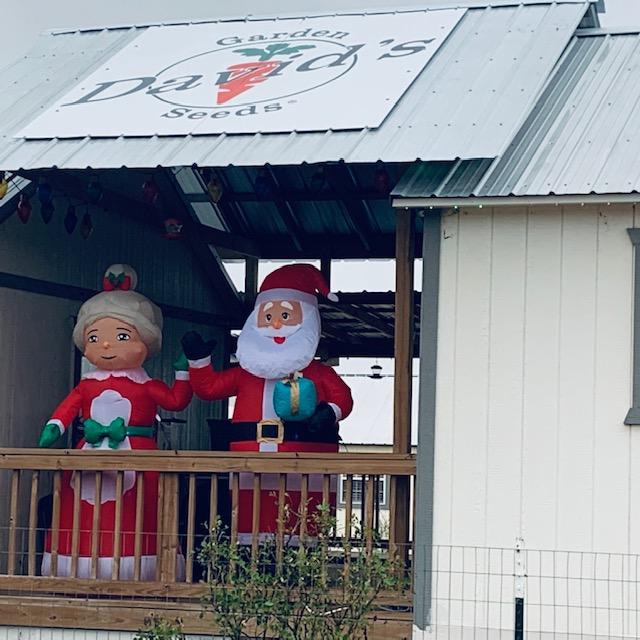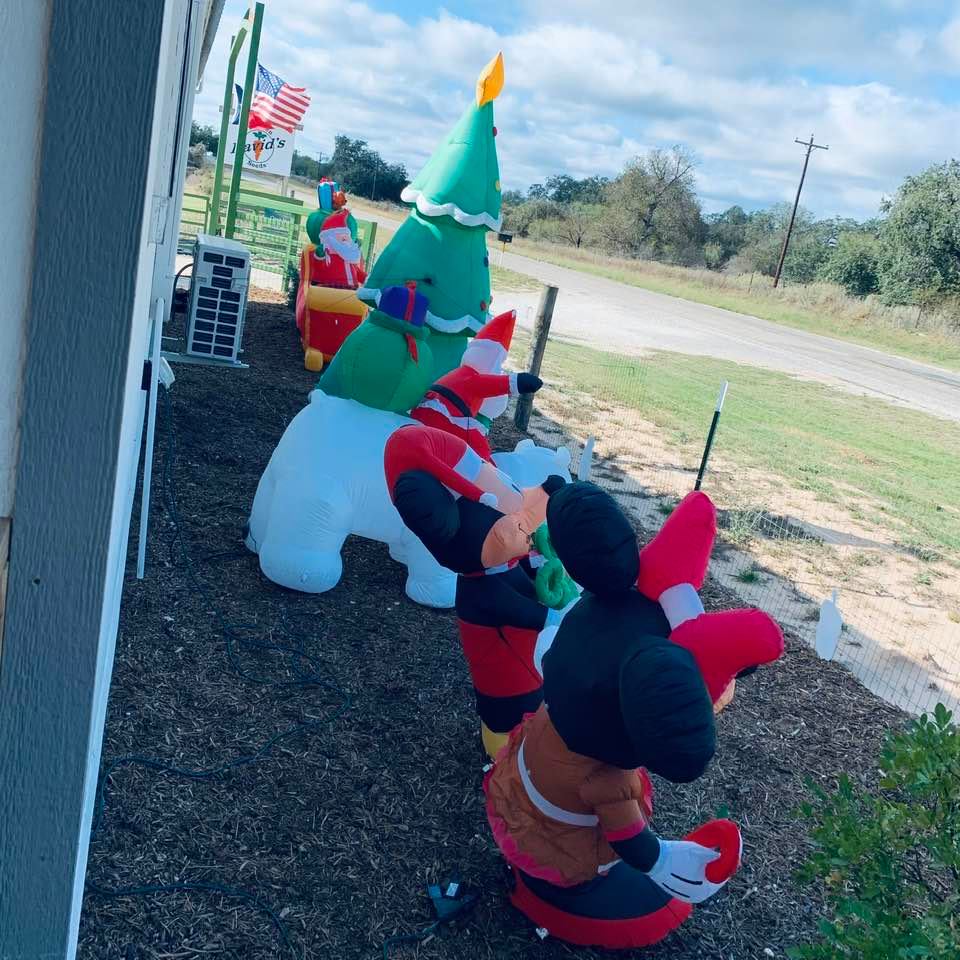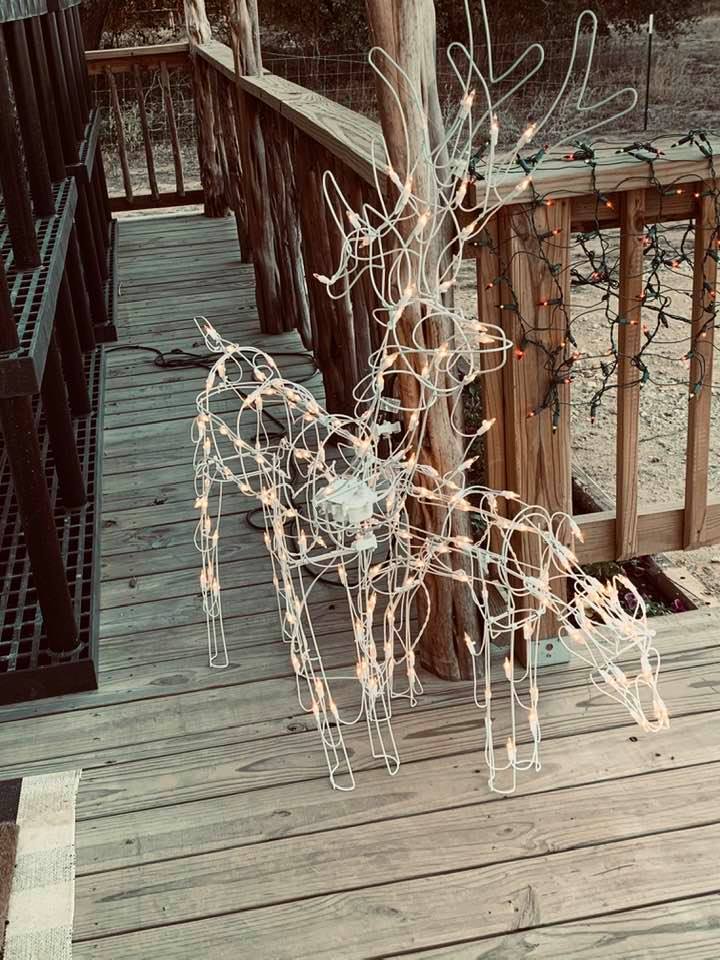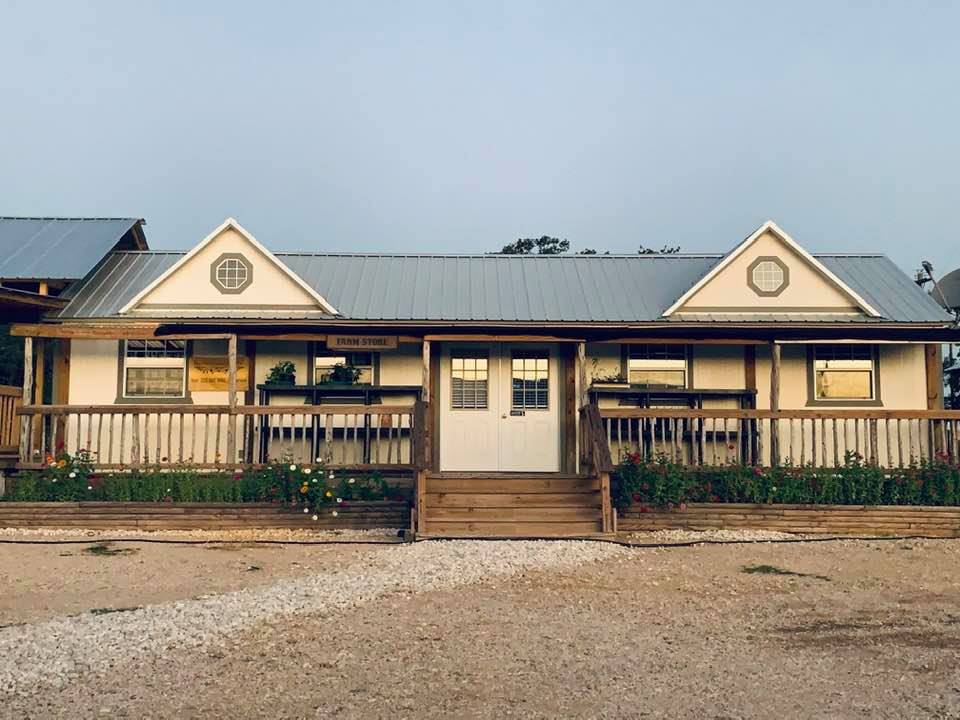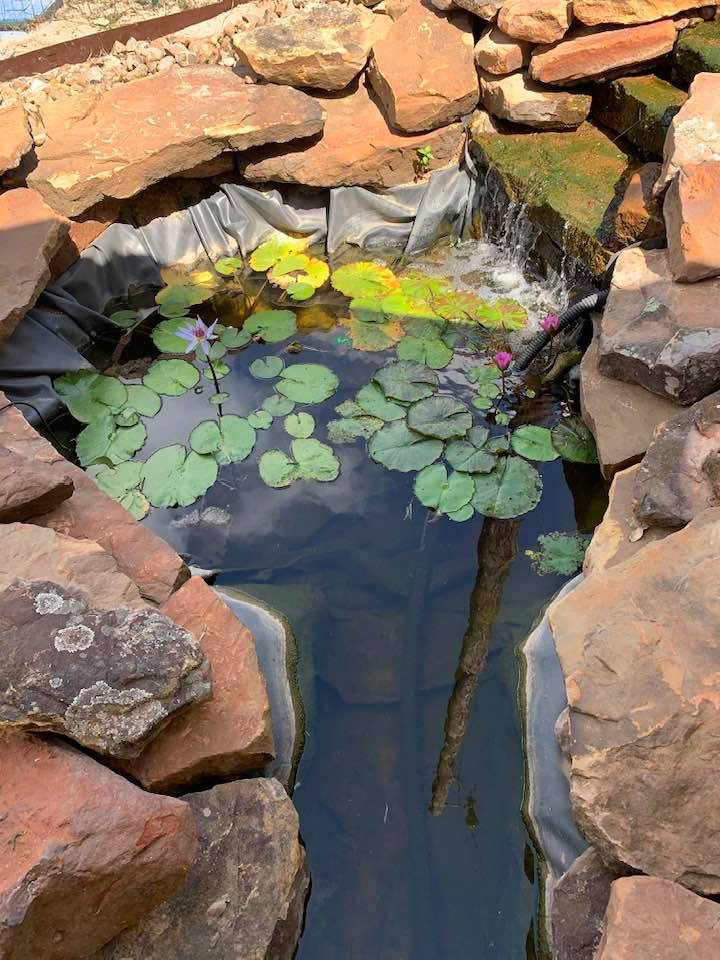Deadhead Your Garden
What on earth does it mean to deadhead your garden? It sounds really strange if you have never heard the term before.
Deadhead Your Garden - 6/10-6/16/2024
Monday, June 10, 2024
Good Monday morning! I got up to take Ethel out at 6:15am. It is a good thing that I did because the dark clouds moved in. Just a few minutes later, the pouring rain started. Yes, we got some wonderful rain this morning. It has been so hot that the grass is getting brown. It is actually 7:30am and the rain is still coming down but not hard anymore.
David told our three outdoor boys not to come in today. It is still very dark in the house and I have been working on this article about how to deadhead your garden. I think you will find it helpful.
The rain lasted until after 9am. At 8am, I heard the doorbell to the store go off and I thought it was one of our team members walking by the sensor. At 8:45am, while I was putting up information on the website, David asked if I knew we had customers. I did not. Matt handled it. This couple drove 90 minutes in the rain to get here to buy our seeds for their garden. It was a pretty good sale, even with the discount. I got over there to say hello and talk to them for a few minutes while Matt rang the order up. The man said he found us online this morning and decided to drive over!
The rain gauge shows we got just one inch. We are grateful Devine also got one inch. Leakey got 1.5 inches and Utopia got three inches of rain plus a tornado.
We did not get anymore rain today. I went to swim this afternoon after work and the pool was half empty again. Matt said a hose popped out again so he fixed it tighter.
I spent the day filling orders and got most of them out.
Deadhead Your Garden
Hey there, fellow gardeners! Are you ready to dive into the world of deadheading? If you're new to gardening or just looking to up your game, you've come to the right place. In this article, we'll explore the ins and outs of deadheading, from what it is to how, when, where, and why you should do it. So, grab your gardening gloves, and let's get started!
First things first, what exactly is deadheading? In simple terms, deadheading is the process of removing spent or faded flowers from your plants. It's a technique that can help keep your garden looking its best and encourage your plants to produce more blooms throughout the growing season.
Now, you might be wondering, "Why should I bother with deadheading?" Well, there are a few key reasons. When you deadhead your plants, you're essentially redirecting their energy from producing seeds to producing more flowers. This means you'll get to enjoy a longer blooming period and a more vibrant garden overall.
Additionally, deadheading can help keep your plants looking neat and tidy. Removing those spent flowers prevents your plants from looking straggly and unkempt. Plus, it can help prevent disease and pest problems by eliminating potential breeding grounds for unwanted visitors.
So, now that you know what deadheading is and why it's important, let's talk about how to do it. The good news is that deadheading is a relatively simple process that doesn't require any special skills or tools. In most cases, you can simply use your fingers to pinch off the spent flowers at the base of the bloom.
However, if you're dealing with a particularly stubborn flower or a plant with thorns, you may want to use a pair of scissors or pruning shears. Just be sure to make a clean cut at a 45-degree angle, just above a leaf node or bud. This will help prevent damage to the plant and encourage new growth.
Tuesday, June 11, 2024
Good morning. No rain this morning. My housekeeper is supposed to come since she did not make it last week. We have another free seed winner, Carolyn of Linden, TN, order #25800.
The humidity is thick this morning. The air feels nasty. It is currently 80° and the high should be 98°. The cool air from yesterday morning is long gone.
I have filled orders and now I will work on pages. Our housekeeper is here. So far today, we have had one set of customers, a couple of construction workers who bought four bottles of water. Not much call for seeds from the store this time of year. It is just too hot in South Central Texas. But don't forget the fall garden. We always get our best garden in the fall. We get the best green beans, carrots, onions, broccoli, cauliflower, Brussels Sprouts, cabbage, spinach, zucchini, and even tomatoes!
Matt finally was able to install the gate for the goat play yard today and then he let them out to play in it. They just love it.
So many people who have come into our retail store over the years have told us about Crawford lettuce. In fact, a gentleman who was here just last week offered to give us some seed for it. David told him that someone else was sending us some and today, we received a nice bag of seeds in the mail. Thank you to Tory in San Antonio for the seeds. We will plant them once the weather cools down. I have them in my office so we don't lose them. I am excited to try them.
The weather reports have been calling for rain this evening. Around 9pm, we had a lot of wind and lightning and a few drops. That was all.
Deadhead Your Garden
Now, let's talk about when to deadhead. The short answer is: whenever you notice spent flowers on your plants. This could be every few days or once a week, depending on the type of plant and how quickly it blooms. As a general rule of thumb, it's best to deadhead your plants regularly to keep them looking their best.
Here in Texas, things brown up pretty quick in the heat so it is easy to tell if a bloom is dead. For instance, roses will continually boom and then die from March through October or so.
However, there are a few exceptions to this rule. Some plants, like sedum and ornamental grasses, have attractive seed heads that can add interest to your garden in the fall and winter. In these cases, you may want to leave the spent flowers in place until spring.
Additionally, some plants, like daylilies and coneflowers, will continue to bloom even if you don't deadhead them. While deadheading can still help keep these plants looking tidy, it's not strictly necessary for their overall health and performance.
So, where should you deadhead? The answer is simple: anywhere you have plants that produce flowers! This could be in your garden beds, containers, or even in your lawn if you have flowering weeds like dandelions or clover.
Now, let's dive a little deeper into the specifics of deadheading different types of plants. First up, let's talk about annuals. These are plants that complete their entire life cycle in one growing season, like petunias, marigolds, and zinnias.
When it comes to deadheading annuals, the goal is to remove the spent flowers before they have a chance to set seed. This will encourage the plant to produce more flowers and keep blooming until the end of the season. Simply pinch off the spent flowers at the base of the bloom, being careful not to damage the surrounding foliage.
Next, let's talk about perennials. These are plants that come back year after year, like daylilies, coneflowers, and black-eyed Susans. When it comes to deadheading perennials, the process is a bit more involved than with annuals.
Instead of just removing the spent flower, you'll want to cut back the entire stem to the nearest leaf node or bud. This will encourage the plant to produce new growth and potentially even a second flush of blooms later in the season.
Wednesday, June 12, 2024
Good morning. We never got that rain in the night. David drove over to Farm to Familia this morning to pick up one of our workers and he just texted me that it has been pouring over there. We're dry as a bone on the farm.
It was another day of filling orders, humidity, heat, no rain, and no customers. Right now through the end of today, we do have a 12% off sale on all seeds. This time of year, everyone is running seed sales because it is too hot to think about planting.
We watched two hours of Gordon Ramsay this evening and we ate Filipino food from A Taste of the Philippines parked at Farm to Familia. It was good. The shows were fun, a nice, midweek break of entertainment. After that, I loaded the dishwasher and fell asleep on the couch watching DVDs of Star Trek The Next Generation. We are on season six. The episodes used to be good but the writers, I think, are getting desperate for new ideas and I think most are just stupid and don't have much to do with space adventures.
Deadhead Your Garden
In the
garden, a woman is carefully deadheading the spent zinnia
blooms, encouraging new flowers to grow. A pair of sharp and clean
gardening shears glisten under the sun rays in her hand.
However, it's important to note that not all perennials require deadheading. Some, like sedum and ornamental grasses, have attractive seed heads that can add interest to your garden in the fall and winter. In these cases, you may want to leave the spent flowers in place until spring.
Now, let's talk about some specific examples of plants that benefit from deadheading. First up, roses. These classic garden favorites can be a bit high maintenance, but regular deadheading can help keep them looking their best.
To deadhead a rose, simply cut back the stem to the nearest leaf node with five leaflets. This will encourage the plant to produce new growth and more blooms throughout the season. Just be sure to use clean, sharp pruning shears to avoid damaging the plant.
Another plant that benefits from deadheading is the petunia. These cheerful annuals are a staple in many gardens, but they can start to look a bit ragged if you don't keep up with deadheading. Simply pinch off the spent flowers at the base of the bloom to encourage more flowers and keep the plant looking tidy.
Marigolds are another annual that benefits from regular deadheading. These bright, cheerful flowers are a favorite among gardeners, but they can start to look a bit messy if you don't remove the spent blooms. Simply pinch off the dead flowers at the base of the bloom to keep the plant looking its best.
When it comes to perennials, coneflowers are a great example of a plant that benefits from deadheading. These hardy, drought-tolerant plants are a favorite among pollinators, but they can start to look a bit ragged if you don't remove the spent blooms.
To deadhead a coneflower, simply cut back the stem to the nearest leaf node or bud. This will encourage the plant to produce new growth and potentially even a second flush of blooms later in the season.
Another perennial that benefits from deadheading is the daylily. These hardy, low-maintenance plants are a favorite among gardeners, but they can start to look a bit messy if you don't remove the spent blooms.
To deadhead a daylily, simply snap off the spent flower at the base of the bloom. This will keep the plant looking tidy and encourage more blooms throughout the season.
Thursday, June 13, 2024
Good morning. No rain expected today, just heat and humidity. More and more veggie plants are turning brown and drying up, thus getting pulled up while the beds are prepared for fall.
We learned something about Agritourism last night from a Facebook post about Texas farms. A blueberry farmer posted that a family came onto the farm to pick blueberries. They picked gallons of them without paying first. Then they haggled over the posted price and refused to pay unless they got a discount. The farmers did not give them a discount so they left the berries and walked out. I say good. They did all of that labor for free. Now the berries should be put up by the farmers or be sold to someone else. The lesson we learned is that they need to pay an entry fee as well as a picking fee to cover the buckets they choose prior to picking.
We are going to try pick your own this fall so this is a good lesson for us. When the price is posted, there should be no haggling.
This morning, a couple came from Corpus Christi to buy seeds from us. They were hoping to get them in bulk but we don't sell most seeds that way. He is a farmer and has a two acre garden. Because all of our seeds are on sale right now, he bought a lot of them for the fall garden. The rest of the day, I have been filling orders and filling bins with seeds from backstock. As the bins empty, no one is refilling them so I started refilling them.
It is currently 3pm and 96°. The goats are outside in their yard playing. The chickens are also playing.
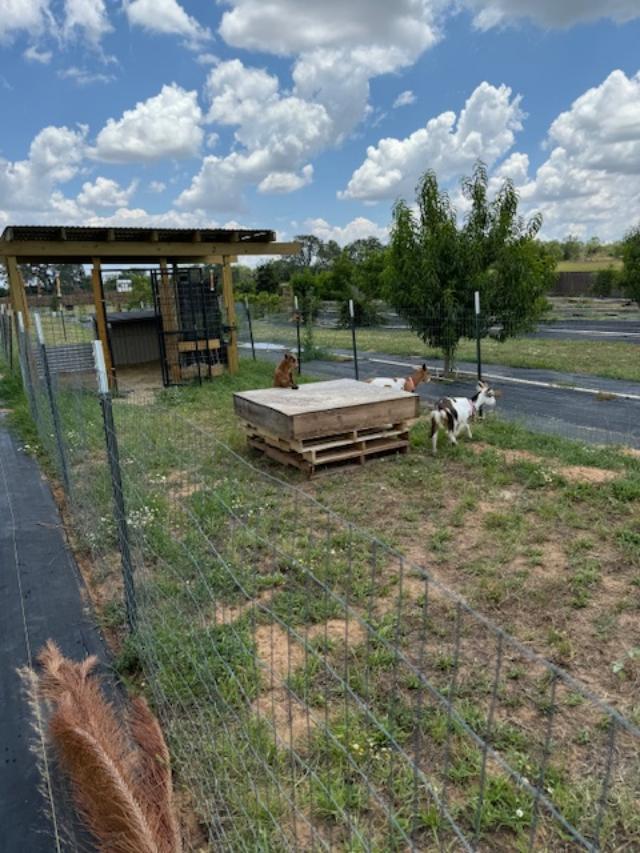 The goat yard is in the orchard.
The goat yard is in the orchard.This evening, I had to put the goats away for the first time. I went out at 8:05pm instead of waiting until sunset at 8:35pm. Matt has been doing it all week for me but he went home sort of early. I thought I would have trouble. The only real trouble I had was figuring out how to work the new gate. It is very weird. Finally, I opened it and Alice and Trixie ran inside their shelter as soon as I stepped inside the yard! Little Norton, jumped around a lot. He eventually went in to his mama. He is so cute.
Getting the chickens to go to bed before dark requires throwing some worms inside the coop. They hear them hit the ground and flood inside from the yard. Then I close up the inner door and put a grid piece over the opening to go outside to keep predators out.
The meat chickens are still not very big and we have had them now for over three weeks. That farmer really did not say much to us about them. I asked him what kind they were. He would not tell me. I notice that they love worms. They will suck those things down but the scratch and chicken food are not their first choice. They also enjoy fresh grass.
Deadhead Your Garden
Now, let's talk about some tools you might need for deadheading. As mentioned earlier, in most cases, you can simply use your fingers to pinch off the spent flowers. However, there are a few tools that can make the job a bit easier.
First up, a pair of clean, sharp scissors or pruning shears. These can be helpful for deadheading plants with tougher stems or thorns, like roses or some perennials. Just be sure to clean your tools between uses to avoid spreading disease between plants.
Another tool that can be helpful for deadheading is a pair of gardening gloves. These can protect your hands from thorns or other irritants and make the job a bit more comfortable overall.
Finally, a small bucket or container can be helpful for collecting the spent flowers as you deadhead. This can help keep your garden looking tidy and make it easier to dispose of the debris when you're finished.
Friday, June 14, 2024
 You're a grand old flag, you're a high flying flag, and forever in peace may you reign. You're the emblem of the land I love, the home of the free and the brave.
You're a grand old flag, you're a high flying flag, and forever in peace may you reign. You're the emblem of the land I love, the home of the free and the brave.Good morning. Happy Flag Day! When I was a kid in New York, we would still be in school on this day. Our music teacher would march us out to the flagpole near the parking lot and we would sit in a circle around the flagpole and sing patriotic songs. It was so much fun. I have always been very patriotic so I loved it.
It is hard to believe that Friday is here already! It is a sunny 8am and 79° with a lot of humidity in the air. Today, we have started our 25% off discount on seeds only. This sale will last through Monday, June 17. Think fall garden and order your seeds now while they are discounted at David's Garden Seeds®!
We had one group of customers this morning. I did not get to wait on them as David and I were about to leave the farm to go do some errands including picking up a prescription for him. We got a few groceries and then came home.
It has been quiet here. I have been filling orders all by myself. Quiet can be nice once in a while. David is in the home office today so he will not be bothered. The rest of the people are over in Production. The outdoor teen and Matt picked apples and did some weeding and watering.
Well, the quiet did not last long. David decided to make some salsa and he called Matt and me into the house. Matt cut the ends off of the tomatoes and peppers and I put them all in the food processor. Now David is cooking them on the stove. He will be canning the salsa. I froze mine a few weeks ago.
Deadhead Your Garden
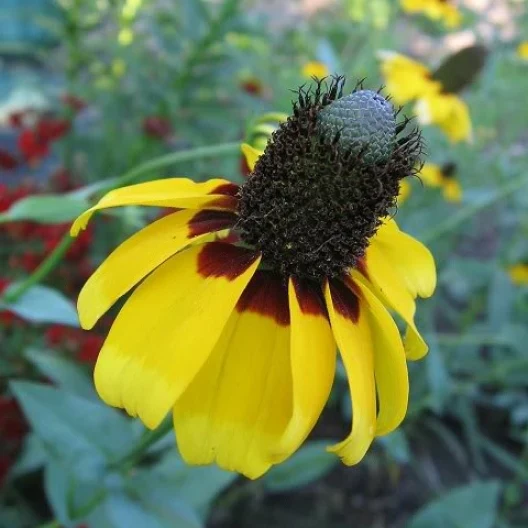 Here is a coneflower. When you deadhead your garden, coneflowers don't need it but it helps them to look neat.
Here is a coneflower. When you deadhead your garden, coneflowers don't need it but it helps them to look neat.Now, let's talk about when to deadhead your garden. As mentioned earlier, the short answer is: whenever you notice spent flowers on your plants. However, there are a few specific times of year when deadheading can be particularly beneficial.
In the spring and early summer, deadheading can help encourage your plants to produce more blooms and keep them looking their best. This is especially important for annuals and some perennials that bloom early in the season.
In the mid to late summer, deadheading can help keep your plants looking tidy and encourage them to continue blooming until the end of the season. This is especially important for annuals and some perennials that bloom later in the season.
In the fall, deadheading can help keep your plants looking tidy as they start to die back for the winter. However, as mentioned earlier, some plants, like sedum and ornamental grasses, have attractive seed heads that can add interest to your garden in the fall and winter. In these cases, you may want to leave the spent flowers in place until spring.
Now, let's talk about some common mistakes to avoid when deadheading your garden. First and foremost, be sure to use clean, sharp tools when deadheading to avoid damaging your plants. Dull or dirty tools can crush or tear the stems, leaving them vulnerable to disease and pests.
Another common mistake is removing too much of the plant when deadheading. When deadheading annuals, be sure to only remove the spent flower and not the surrounding foliage. When deadheading perennials, be sure to only cut back to the nearest leaf node or bud, not all the way to the ground.
Finally, be sure to dispose of the spent flowers and debris properly. Leaving them in your garden can attract pests and disease, so it's best to remove them entirely. You can either compost them or dispose of them in your regular trash.
Saturday, June 15, 2024
I completely forgot to write today. I got up early as usual. Found a chicken dead. Looks like she was pushed off the top roost which has happened before. The rest were all fine. I opened the store and we had no customers until 90 minutes before closing. Then we had three. I had to open the gate for the last customer to leave.
After that, I came in the house and cleaned up quite a bit. Then I set up the batter for a lava cake and boiled some eggs. At 5pm, I finally went in the pool. At 6:30pm, I went out to take care of the animals, a bit late but at least I got it done. At 7pm, Svengoolie came on and I thought we would watch but instead, we watched the new Ghostbusters.
I baked my lava cake during the movie and it leaked out all over my oven. I should have put it on a cookie sheet. So I will get to clean it all up in the morning. Yay!
Deadhead Your Garden
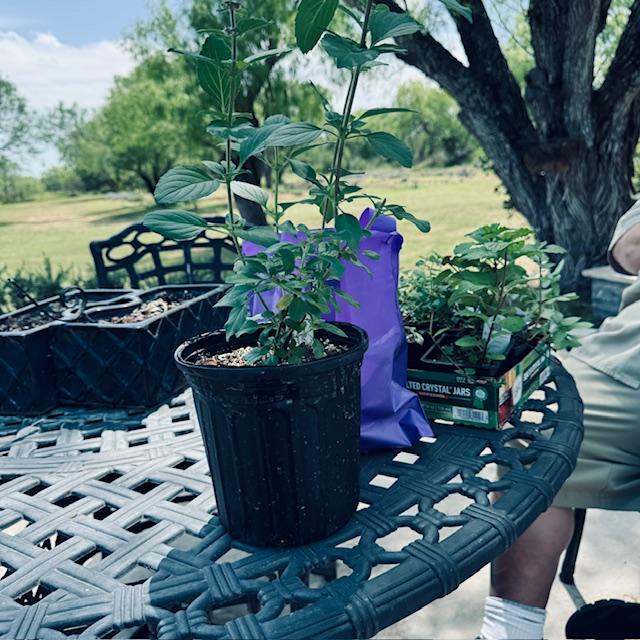 Here is a lavender plant I bought from Doe Re Mi Lavender Farm in Moore. I am actually sitting at that farm in this photo with my purchases. You should visit!
Here is a lavender plant I bought from Doe Re Mi Lavender Farm in Moore. I am actually sitting at that farm in this photo with my purchases. You should visit!Now, let's talk about some additional benefits of deadheading your garden. In addition to encouraging more blooms and keeping your plants looking tidy, deadheading can also help improve the overall health of your plants.
When you deadhead your garden, you're also removing any potential disease or pest problems that may be lurking inside. This can help keep your plants healthy and prevent the spread of problems throughout your garden.
Additionally, deadheading can help improve the overall appearance of your garden by keeping your plants looking their best. This can be especially important if you have a lot of visitors or if you're trying to sell your home.
Finally, deadheading can be a great way to relax and unwind after a long day. There's something incredibly satisfying about taking a few minutes to tidy up your garden and see the immediate results of your efforts.
Now, let's talk about some plants that don't require deadheading. As mentioned earlier, some plants, like sedum and ornamental grasses, have attractive seed heads that can add interest to your garden in the fall and winter.
Other plants, like daylilies and coneflowers, will continue to bloom even if you don't deadhead them. While deadheading can still help keep these plants looking tidy, it's not strictly necessary for their overall health and performance.
Some other plants that don't require deadheading include:
- Hostas: These shade-loving perennials have attractive foliage that looks great even after the flowers have faded.
- Lavender: This fragrant herb has attractive foliage and seed heads that can add interest to your garden even after the flowers have faded.
- Ornamental peppers: These colorful annuals have attractive fruit that can add interest to your garden even after the flowers have faded.
- Sedums: As mentioned earlier, these hardy perennials have attractive seed heads that can add interest to your garden in the fall and winter.
Now, let's talk about some plants that benefit from deadheading but may require a bit more effort. Roses, for example, can be a bit more challenging to deadhead than some other plants.
When deadheading roses, be sure to use clean, sharp pruning shears to avoid damaging the plant. Cut back the stem to the nearest leaf node with five leaflets, being careful not to remove too much of the plant.
Another plant that can be a bit more challenging to deadhead is the delphinium. These tall, stately perennials have multiple blooms on each stem, so deadheading can be a bit more time-consuming.
To deadhead a delphinium, simply cut back the entire stem to the nearest leaf node or bud. This will encourage the plant to produce new growth and potentially even a second flush of blooms later in the season.
Sunday, June 16, 2024
Good Sunday morning. Happy Father's Day to all of the men who are fathers! I have already fed the fish and got the big canner from the commercial kitchen. David is going to can some salsa today so that will be good. I've been freezing it and the freezer is pretty full.
Of course, it is another humid, hot day. Not much changes in our horrifying hot summers here. I know. Some of you are saying that it is not yet summer. It has been summer since early May. Any time the thermometer reads 100°, it is summer.
Well, I have to go out and feed the animals and I dread it. It is only 79° right now, yet I know I will be sweating nonstop as soon as I step outside.
We went to a church and afterwards, Matt came over and grilled steaks. We watched movies all afternoon. It was nice.
Deadhead Your Garden
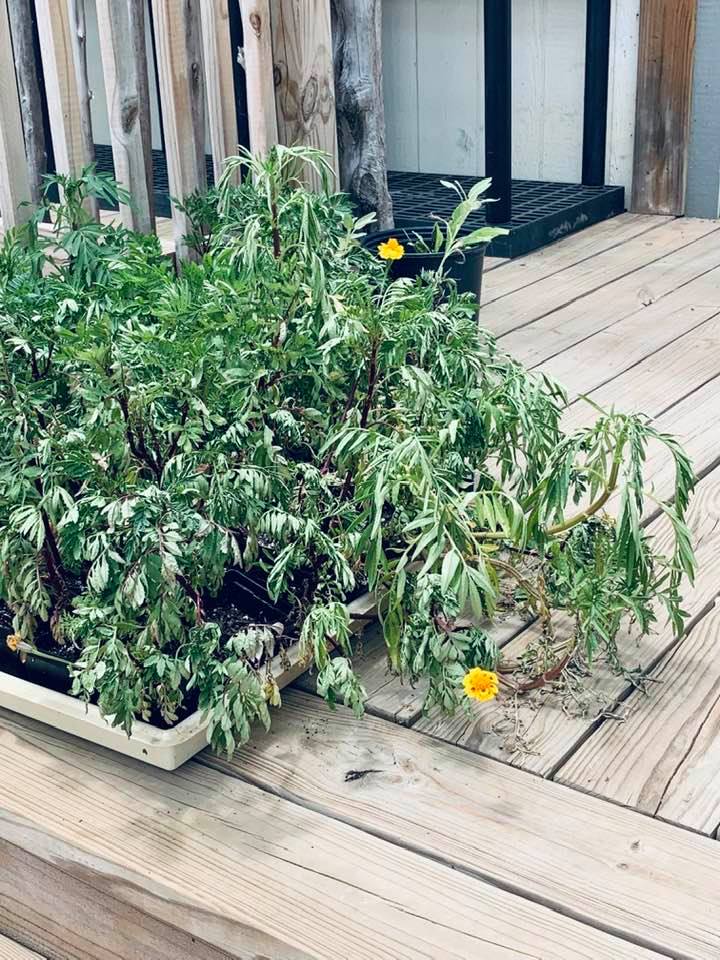 Here are some marigold seedlings that we sold. They are good to plant with your veggies to keep bugs away from your garden.
Here are some marigold seedlings that we sold. They are good to plant with your veggies to keep bugs away from your garden.Finally, let's talk about some plants that may require deadheading more frequently than others when you deadhead your garden. Annuals, for example, may require deadheading every few days to keep them looking their best.
Petunias, marigolds, and zinnias are all examples of annuals that benefit from frequent deadheading. Simply pinch off the spent flowers at the base of the bloom to encourage more flowers and keep the plant looking tidy.
Perennials, on the other hand, may only require deadheading once or twice a season, depending on the type of plant. Coneflowers, for example, may only need to be deadheaded once in the mid to late summer to encourage a second flush of blooms.
In conclusion, deadheading is a simple but effective technique that can help keep your garden looking its best throughout the growing season. By removing spent flowers, you can encourage your plants to produce more blooms, keep them looking tidy, and even improve their overall health.
Whether you're a seasoned gardener or just starting out, deadheading is a skill that's well worth mastering. With a little bit of practice and patience, you'll be able to keep your garden looking beautiful all season long.
So, the next time you're out in your garden, take a few minutes to deadhead your plants. Not only will you be rewarded with a more beautiful and vibrant garden, but you'll also be doing your plants a favor by helping them stay healthy and productive.
Happy gardening!
Return from Deadhead Your Garden to Year Five On The Farm
Anything To Share On This Topic?
Would you like to share additional information about this topic with all of us?
Since 2009, over 1,500,000 home gardeners, all across the USA, have relied on David's Garden Seeds® to grow beautiful gardens. Trust is at the heart of it. Our customers know David's Garden Seeds® stocks only the highest quality seeds available. Our mission is to become your lifetime supplier of quality seeds. It isn't just to serve you once; we want to earn your trust as your primary supplier.
Watch Our 2022 TV Commercial!
Sing Along To Our Jingle
♪♫♪♪ ♫ ♪ ♫♪♫♫
♪♫♪♪♫♫
Peppers and peas
And lots of yummy greens
You can't go wrong
With Squash This Long
At David's Garden Seeds
♪ ♫ ♪ ♫
Our New 2024 TV Ad
Please like and subscribe on YouTube and come visit us at our Farm Store! The music on our TV ad was written, played, and sung by our son, Matthew Schulze. You can meet him when you come to the farm. He just might give you a tour. Ask him to grab a guitar and sing our jingle that he wrote.

We are David's Garden Seeds®. If you need great seeds, we've got over 1,200 varieties to choose from.
Subscribe To Mrs. David's Garden Seeds® Newsletter For FREE!
Find out what is going on down on the farm by reading our blog and by subscribing to our free newsletter for all of the information going down at David's Garden Seeds® and on the farm. I love to share helpful information with you. Please let your friends know and y'all come on down for a visit when you get the chance. We would love to meet you!
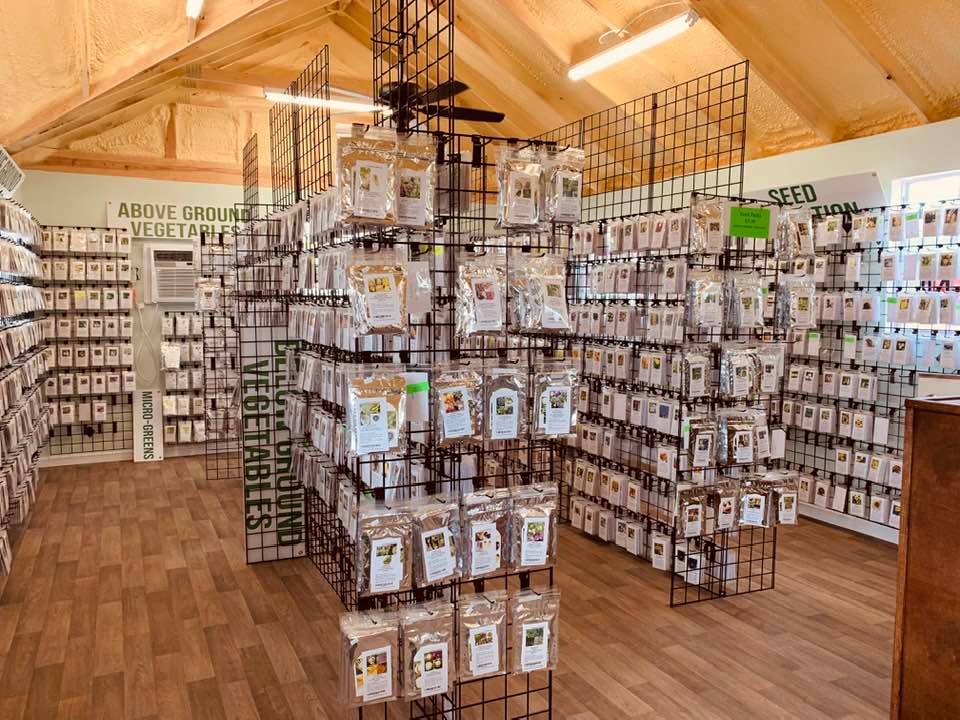
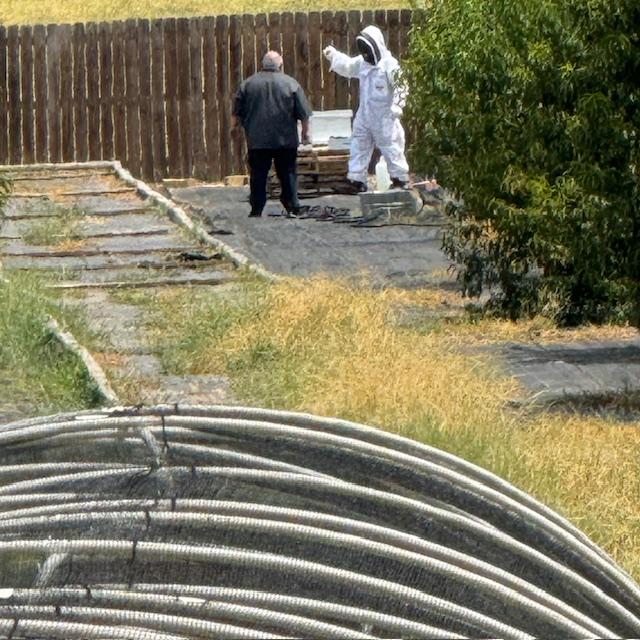 Our bee hives
Our bee hives Our fish pond
Our fish pond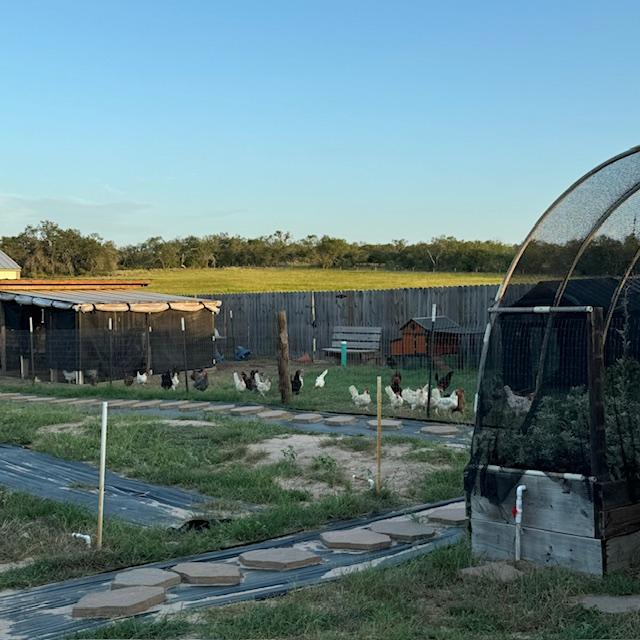 Our chickens
Our chickens Our bunny rabbits
Our bunny rabbits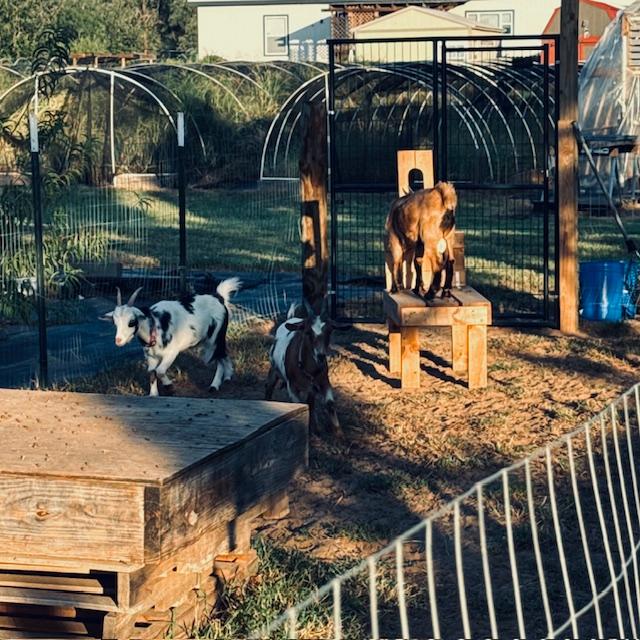 Our Nigerian Dwarf goats
Our Nigerian Dwarf goats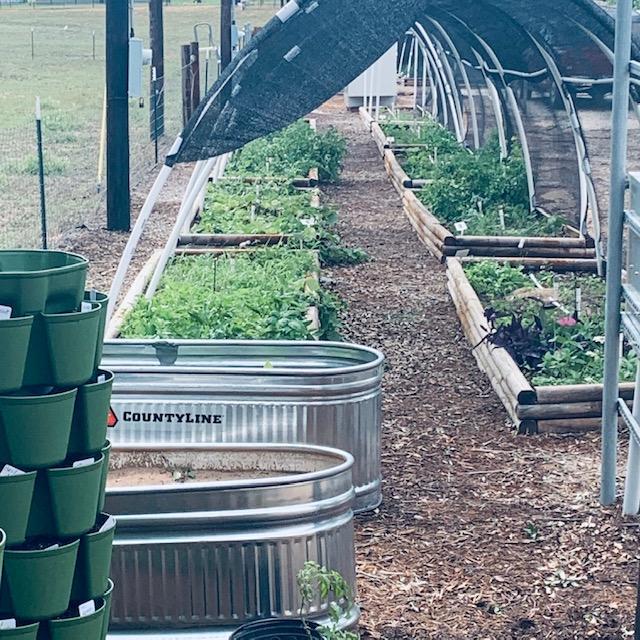 A few of our raised garden beds
A few of our raised garden beds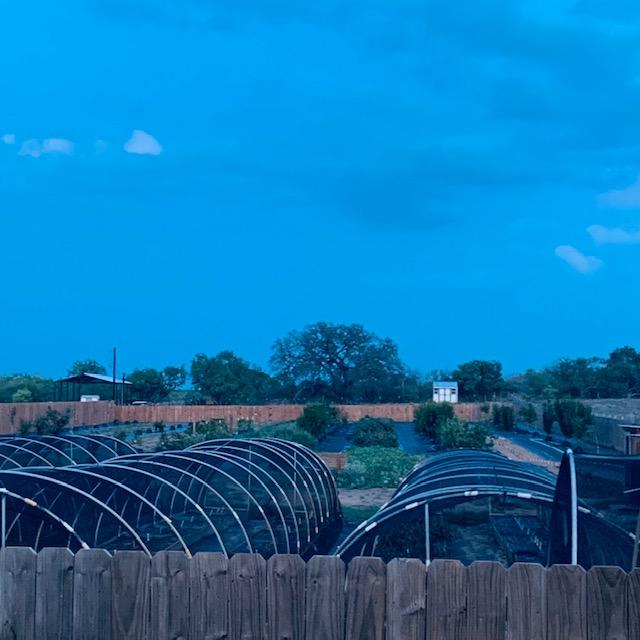 Our orchard and hoop houses
Our orchard and hoop houses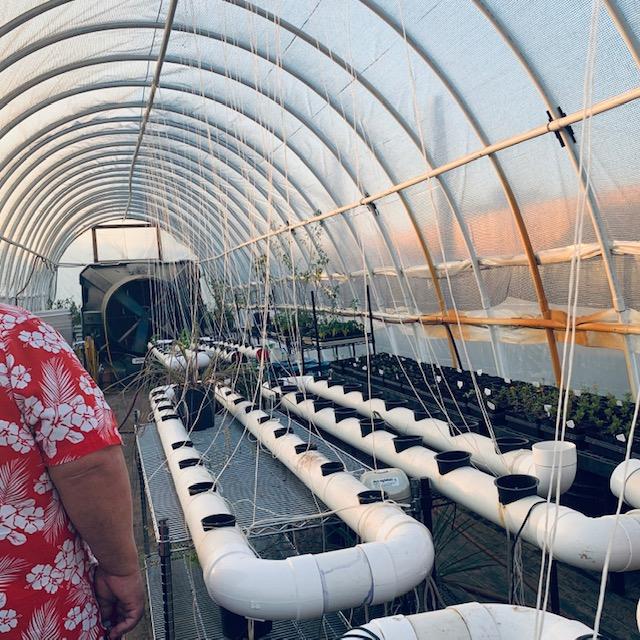 Inside our high tunnel
Inside our high tunnel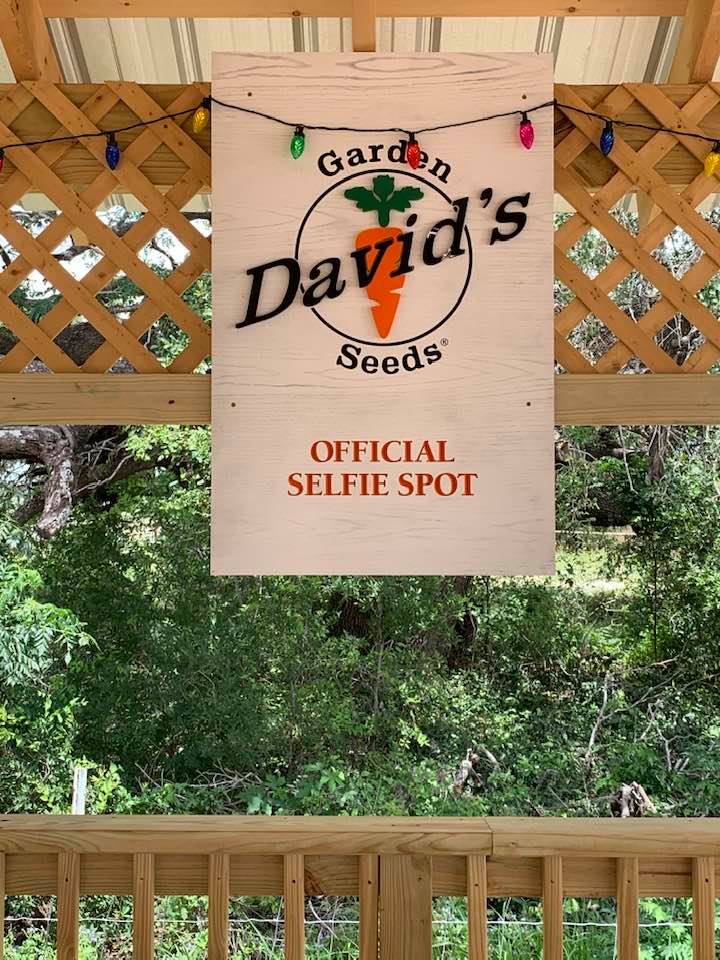 Take a selfie at our official selfie spot!
Take a selfie at our official selfie spot!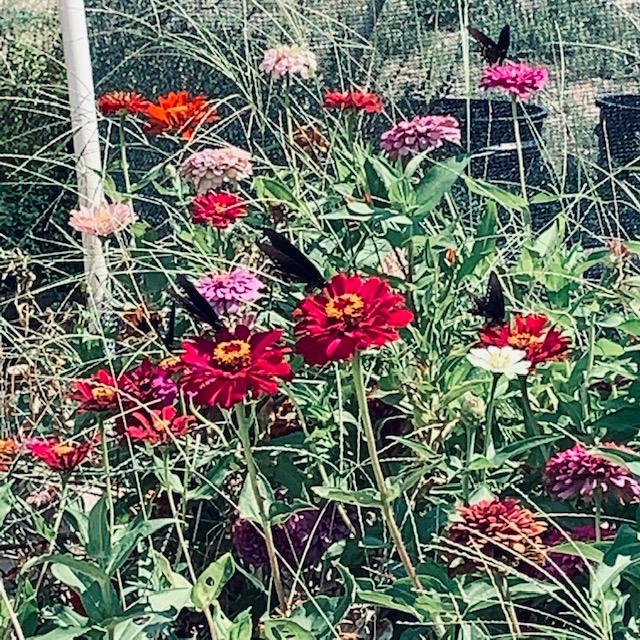 Flowers, bees, and butterflies are everywhere!
Flowers, bees, and butterflies are everywhere!